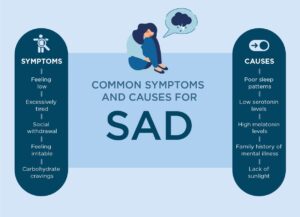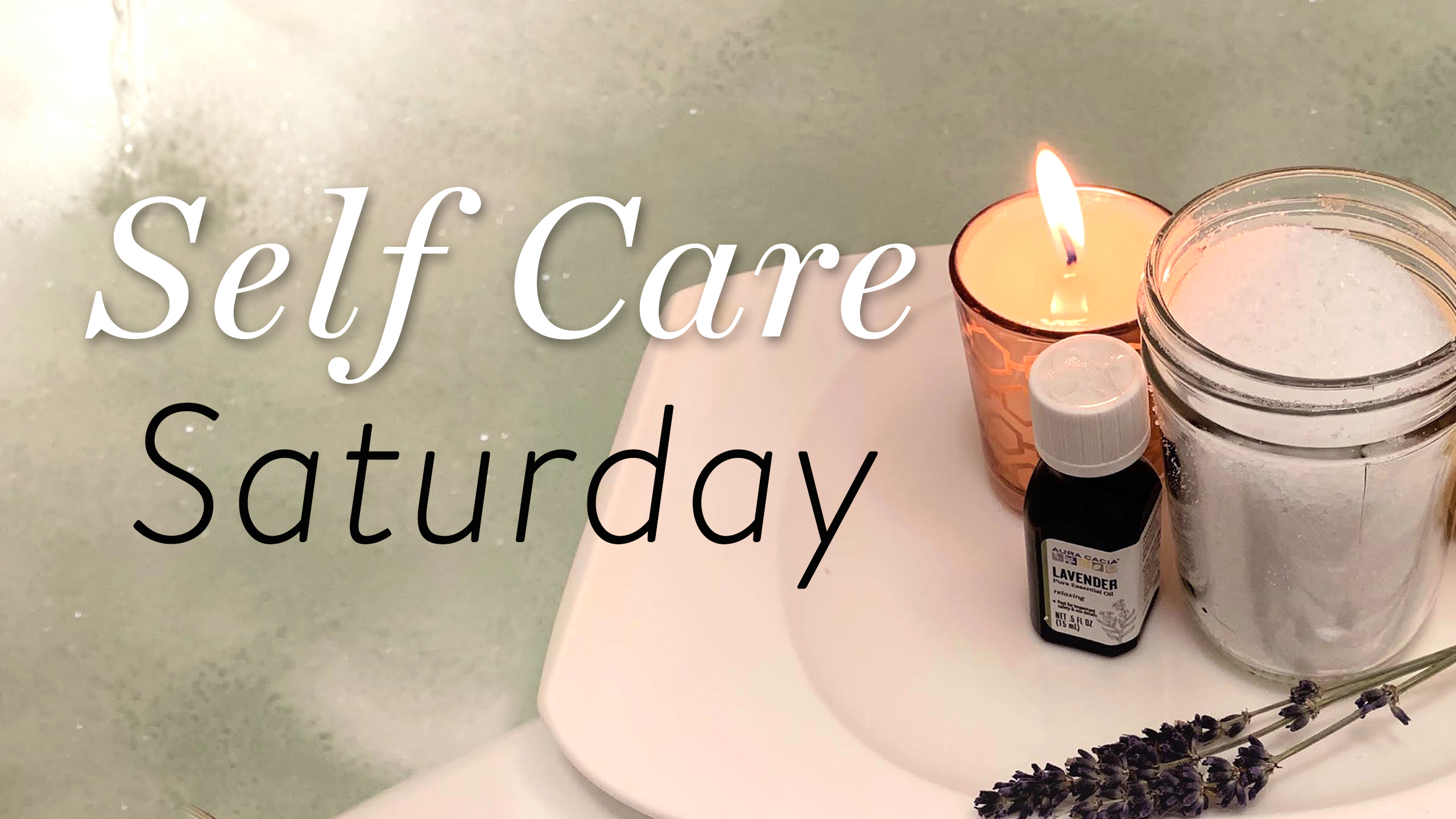What is Seasonal Affective Disorder (SAD)?
Seasonal Affective Disorder (SAD) is a type of depression that occurs at a certain time of year, usually in the winter when daylight hours are shorter. It is also known as winter depression or seasonal depression.
People with SAD may experience symptoms such as feeling sad, hopeless, or sluggish during the winter months, but feel better during the rest of the year. The exact cause of SAD is unknown, but it is believed to be related to changes in circadian rhythm and serotonin levels in the brain.
It is important to note that SAD is more than just feeling a little down in the winter; it is a clinical diagnosis that can have a significant impact on a person’s daily life and functioning.
If you or someone you know is experiencing symptoms of SAD, it is important to seek help from a medical professional to receive an accurate diagnosis and proper treatment.
The Causes and Risk Factors of SAD
Seasonal Affective Disorder (SAD) is a type of depression that occurs at a certain time of year, usually in the winter when the days are shorter and there is less sunlight. The exact cause of SAD is unknown, but there are several factors that may contribute to its development. One of the main causes of SAD is thought to be a disruption in the body’s biological clock, or circadian rhythm. This internal clock helps regulate the sleep-wake cycle, and when it is disrupted by the changing seasons, it can lead to symptoms of depression.
Another factor that may contribute to SAD is a drop in serotonin levels. Serotonin is a neurotransmitter that helps regulate mood, and lower levels of serotonin have been linked to depression. The reduced sunlight in the winter months may lead to a decrease in serotonin production, which could then trigger symptoms of SAD.
There are also certain risk factors that may increase a person’s likelihood of developing SAD. For example, individuals with a family history of depression or SAD may be more genetically predisposed to the condition. Additionally, women are more likely than men to experience SAD, and young adults are also at an increased risk.
Other risk factors for SAD may include living far from the equator, where there are greater fluctuations in daylight hours, as well as having a diagnosis of another mental health condition, such as anxiety or bipolar disorder. All of these factors can influence the development and severity of SAD in individuals.

How Does Light Therapy Help with SAD?
Seasonal Affective Disorder (SAD) is a type of depression that comes and goes with the seasons, typically occurring in the fall and winter months when there is less sunlight. It is believed that the lack of sunlight during these times can disrupt the body’s internal clock and lead to feelings of depression and lethargy.
One of the ways to treat SAD is through light therapy, also known as phototherapy. This treatment involves exposure to bright light that mimics natural outdoor light. The idea is that this can cause a change in brain chemicals linked to mood and sleep, easing SAD symptoms.
Light therapy is thought to affect the chemicals in the brain that are linked to mood, such as serotonin and melatonin. Increased exposure to light can help to regulate these chemicals and improve mood, reducing the symptoms of SAD.
Light therapy sessions typically involve sitting in front of a light box that emits a bright light, usually around 10,000 lux, for a specified amount of time each day. This exposure to bright light can help to reset the body’s internal clock and improve mood and energy levels.
The Impact of SAD on Mental Health
Seasonal Affective Disorder (SAD) is a type of depression that occurs at a certain time of year, usually in the winter months when daylight hours are shorter. The impact of SAD on mental health can be significant, affecting individuals both mentally and emotionally.
People with SAD may experience symptoms such as low energy, irritability, oversleeping, and difficulty concentrating. These symptoms can have a profound impact on an individual’s daily life, making it challenging to carry out normal activities and maintain healthy relationships.
The negative effects of SAD on mental health can also lead to feelings of hopelessness and despair, which can further exacerbate the symptoms of depression. This can create a cycle of worsening mental health that is difficult to break without appropriate treatment and support.
It is important for individuals struggling with SAD to seek help and support from mental health professionals to address the impact of this disorder on their mental well-being. With proper intervention and treatment, it is possible to manage and alleviate the emotional toll that SAD can take on mental health.

Tips for Managing SAD Symptoms
Seasonal Affective Disorder (SAD) can be difficult to cope with, but there are several strategies that can help manage the symptoms. One of the most important tips for managing SAD symptoms is to prioritize exposure to natural light. This can be achieved by spending time outdoors during daylight hours, opening curtains and blinds at home, and positioning workspaces near windows. Natural light helps regulate the body’s internal clock and can improve mood and energy levels.
Another important tip for managing SAD symptoms is to maintain a healthy lifestyle. This includes eating a well-balanced diet, getting regular exercise, and prioritizing quality sleep. Regular physical activity has been shown to improve mood and reduce symptoms of depression, which are common in SAD. Additionally, a healthy diet and good sleep hygiene can have a positive impact on overall mental well-being.
It’s also beneficial to create a supportive environment at home and work. This can involve seeking out social support, sharing feelings with close friends and family, and fostering positive relationships. Surrounding oneself with understanding and empathetic individuals can provide emotional support and comfort during challenging times.
Lastly, seeking professional help is a crucial tip for managing SAD symptoms. If someone is struggling to cope with their symptoms, it’s important to reach out to a healthcare professional. This may involve consulting with a doctor or mental health provider to discuss treatment options such as therapy, medication, or light therapy. Seeking professional help can provide individuals with the guidance and support they need to effectively manage their SAD symptoms.
Effective Coping Techniques for SAD
Seasonal Affective Disorder (SAD) is a type of depression that occurs at the same time every year, usually in the fall and winter months. It can have a significant impact on daily life, making it important to find coping techniques that can help manage the symptoms.
One effective coping technique for SAD is light therapy. This involves sitting in front of a light box that emits bright light, which can help regulate the body’s internal clock and improve mood. Exercise is also important for managing SAD symptoms, as it can help boost mood and energy levels.
Another coping technique is to maintain a healthy lifestyle. This includes eating a balanced diet and getting enough sleep, as well as avoiding alcohol and drugs, which can worsen SAD symptoms.
It’s also helpful to stay connected with loved ones and seek social support. This can provide a sense of belonging and reduce feelings of isolation, which are common in those with SAD.
When to Seek Professional Help for SAD
When you are experiencing Seasonal Affective Disorder (SAD), it can be difficult to know when to seek professional help. It is important to recognize the severity of your symptoms and understand when it is time to reach out for professional assistance. If you find that your symptoms are significantly impacting your daily life and functioning, it may be time to seek help.
It is also important to seek professional help if you are experiencing thoughts of self-harm or suicide. These thoughts should always be taken seriously, and reaching out for professional assistance is crucial in these situations. Additionally, if you have tried various coping techniques and home remedies without improvement, it may be time to seek the guidance of a mental health professional.
Seeking professional help for SAD is not a sign of weakness, but rather a proactive step towards improving your mental health. With the support of a mental health professional, you can develop a treatment plan tailored to your individual needs and work towards finding relief from your SAD symptoms.
Remember, there is no shame in seeking help when you are struggling with SAD. You deserve to feel better and live a fulfilling life, and professional assistance can provide the support and guidance you need to achieve that.











